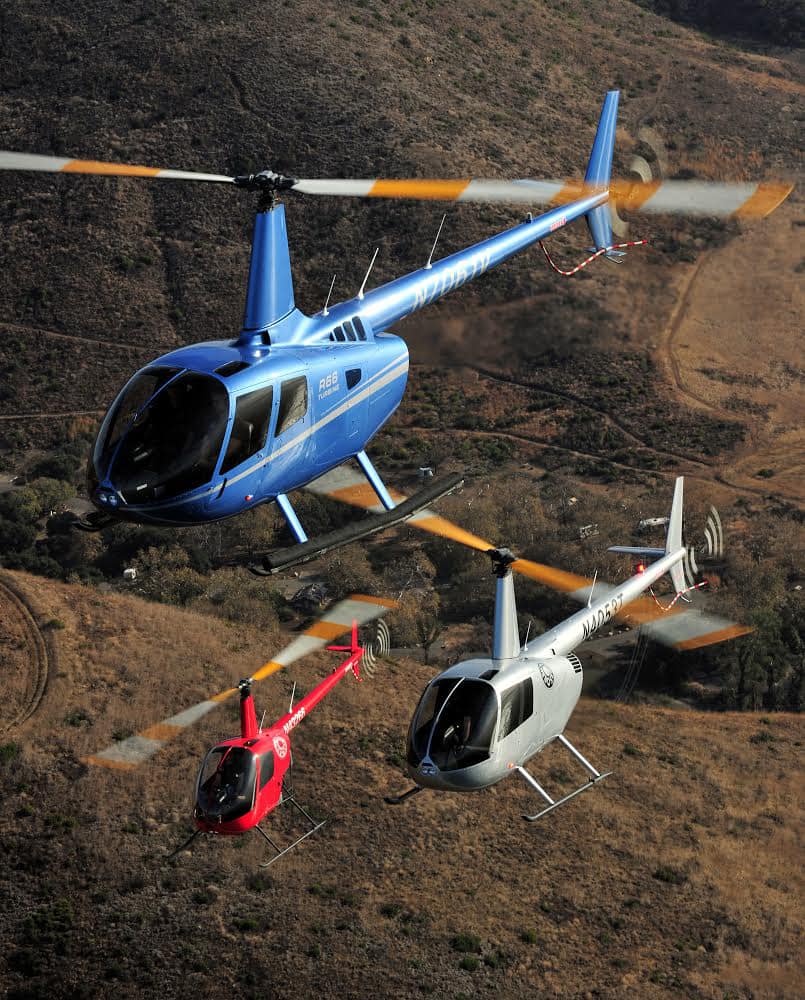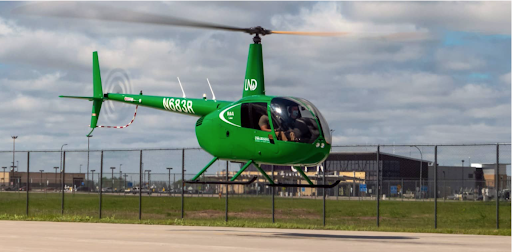Notice: WP_Theme_JSON_Resolver::get_user_data(): Error when decoding a theme.json schema for user data. Syntax error in /home/rushprnewscom-328/public_html/prod/wp-includes/functions.php on line 6114
Throughout its 48-year history, Robinson Helicopter Company says its affordable fleet of aircraft has attracted a steady flow of new customers and that up-and-coming pilots make up a large percentage of its customer base. That’s because the new pilots may have first experienced chopper flight in a Robinson while flying a model in flight school. Robinson Helicopter Company President Kurt Robinson says prioritizing the needs of new pilots is a cornerstone of his company’s legacy.
“It’s very important that we respond to that market, and make it affordable for them,” says Robinson, “so more people can learn to fly, and they will be able to use our helicopters.”
Robinson Helicopter Company has been a mainstay of the civil helicopter industry. For more than 40 years, the family-run business has introduced thousands of private pilots, flight schools, and commercial operators to its R22, R44, and R66 aircraft.
Robinson adds that two of the company’s more affordable helicopter models, the R22 and R44 Cadet, were created with budget conscious entry-level pilots in mind.
Robinson Helicopter Company is Forging Mutually Beneficial University Partnerships
As helicopter flight’s popularity continues to grow, several colleges have established helicopter training programs that utilize Robinson Helicopter Company’s aircraft. The University of North Dakota, Southern Utah University, and Embry-Riddle Aeronautical University are three notable examples.
Kurt Robinson says the collegiate partnerships are a major source of pride for the company. “The fact that so many colleges and flight schools are using our helicopter, to us, it’s a joy. I love meeting young students who are just learning to fly and come to our safety course; their enthusiasm is infectious… We absolutely love the training market.”
Off campus, new, and experienced helicopter pilots can also take advantage of Robinson Helicopter Company’s Pilot Safety Course, a popular three-day program. The course takes place at the company’s Torrance, California, manufacturing facility, and includes a close-up review of aircraft systems, maintenance procedures, and preflight checklists. The instructor also covers several topics from the pilot operating handbook.
In addition to the classroom sessions, attendees enjoy a tour of the Robinson Helicopter Company manufacturing facility. Attendees also have the opportunity to take an hour-long flight with an experienced company safety pilot. The flight takes place in an R22, R44, or R66 aircraft.
The Pilot Safety Course is open to pilots with three or more logged flight hours in the R22, R44, or R66 Robinson helicopter. Although student pilots are welcome to enroll, they must have earned their helicopter rating before they attend the course.
The Robinson Helicopter Company R22 and R44 Cadet: Ideal for the Training Market

From the beginning, Kurt Robinson says Robinson Helicopter Company prioritized engineering its aircraft for ease of maintenance and affordability. In 1979, when Frank Robinson, Kurt’s father and the founder of the company, launched the two-seat R22 private pilots and flight schools quickly gravitated to the compact helicopter model.
Kurt Robinson recognizes the R22 helped put Robinson Helicopter Company on the map. This entry-level aircraft carved out its own market niche and enabled many budget-conscious pilots to take to the skies. However, the lightweight R22 does have significant payload limitations: It does not have the room or sufficient gross weight capacity to accommodate the electronics gear necessary for instrument flight training.
To resolve the issue, Robinson Helicopter Company introduced the popular four-seat R44. Kurt Robinson says the aircraft evolved into the R44 Cadet, specifically designed for the training market.
“And then, [the R22] developed into the R44. And particularly with the instrument training market, and to make things a little easier, that’s how we developed the R44 Cadet, which is really a two-place version of the R44,” he says. “[The R44 Cadet is] a simplified, lower-cost helicopter we made as affordable as possible for people to learn to fly. It opens the market to young students and to people who want to learn [how to fly] our helicopters.”
Transition to Larger Aircraft, From Pleasure to Business
As new pilots gain more experience and travel longer distances, they frequently transition to larger Robinson Helicopter Company aircraft. Kurt Robinson says he and his team helped develop Robinson’s fleet with that evolution in mind.
“It doesn’t hurt us at all that somebody who learns in an R22, later on, will very likely fly in a R44 or R66. That’s not lost on us, and we appreciate it because if they’re comfortable with that aircraft, then it’s very easy for them to transition into the larger aircraft,” he says.
Many pilots of Robinson Helicopter aircraft translate their passion for helicopter flight into careers or successful businesses. Kurt Robinson says the company’s aircraft often serve as springboards for professional opportunities.
“As they grow into bigger [helicopters], whether it’s police or air medical, we’re again maximizing the utility of the market. And the place to start is here,” he says.
As Kurt Robinson navigates Robinson Helicopter Company through another decade, he says he frequently immerses himself in management and production logistics. However, he still revels in the sheer enjoyment of helicopter flight and takes every opportunity to fly.
Robinson says he also thoroughly enjoys interacting with young flight students and pilots who have just grasped the basics of this challenging, but rewarding, activity.
“I’ve been flying now for 30 years,” he says, “and to see somebody who’s just learned to do it, it’s just too much fun to talk to them and feel their excitement.”



